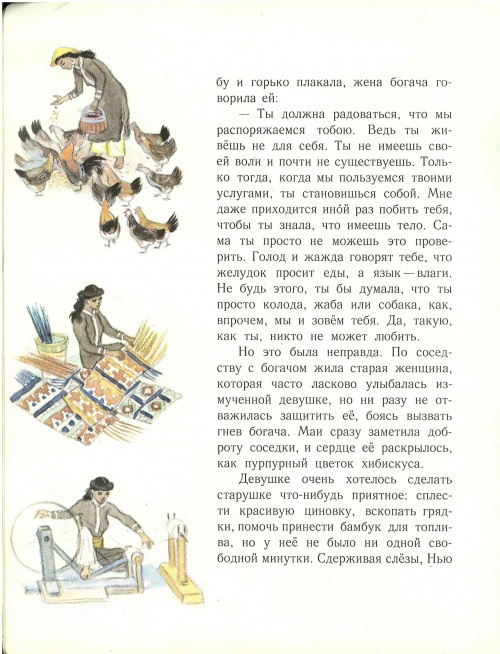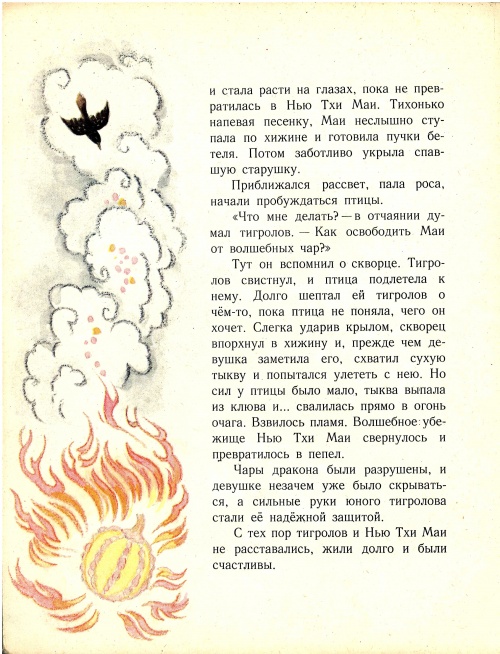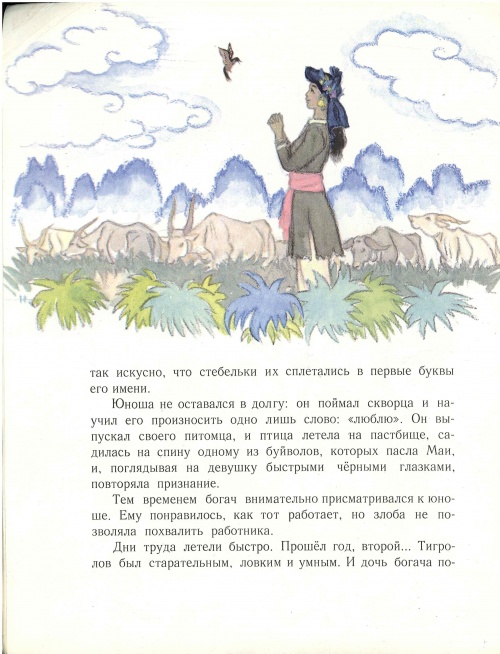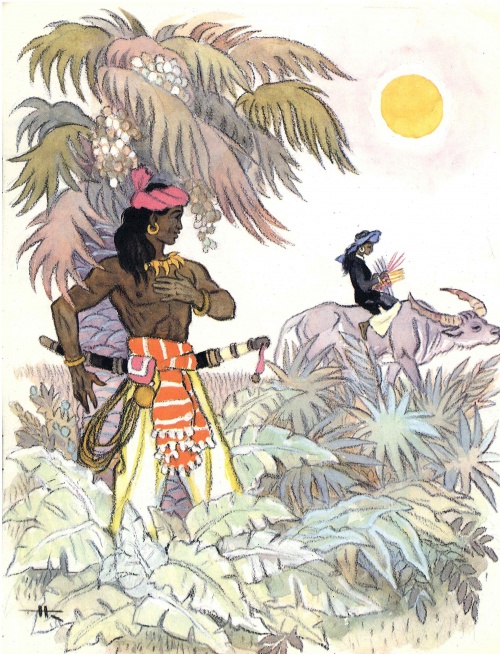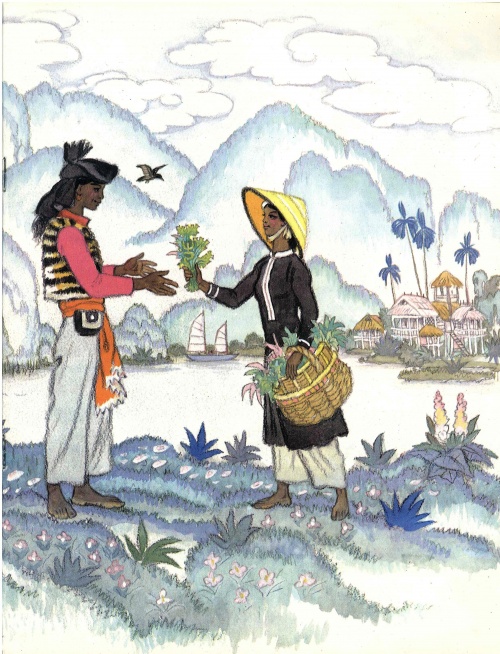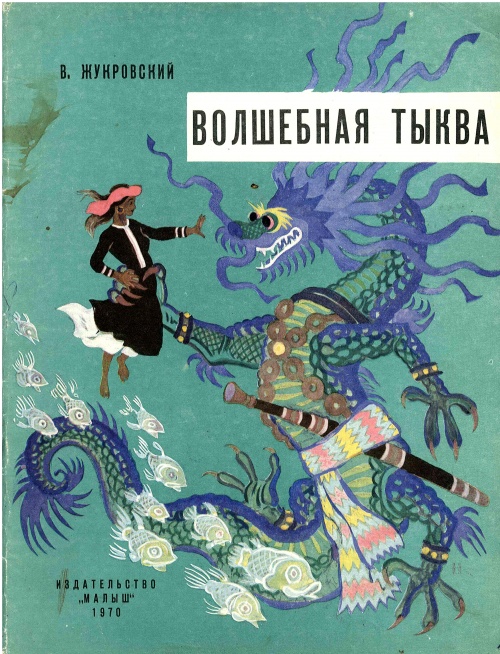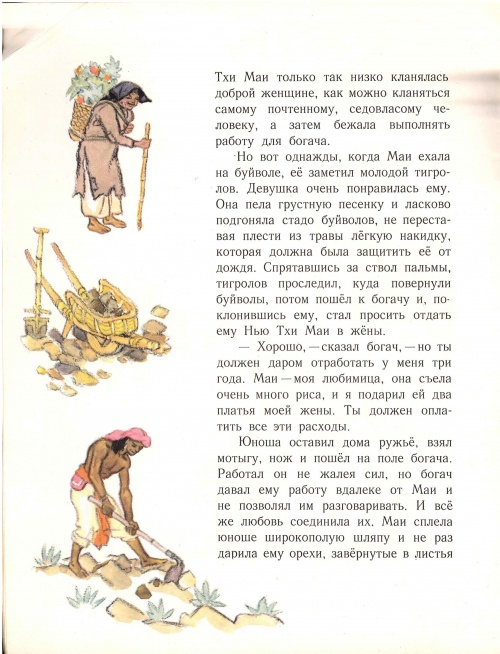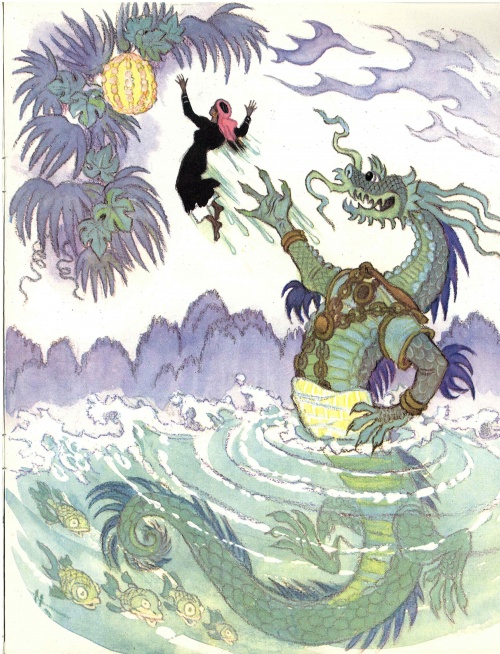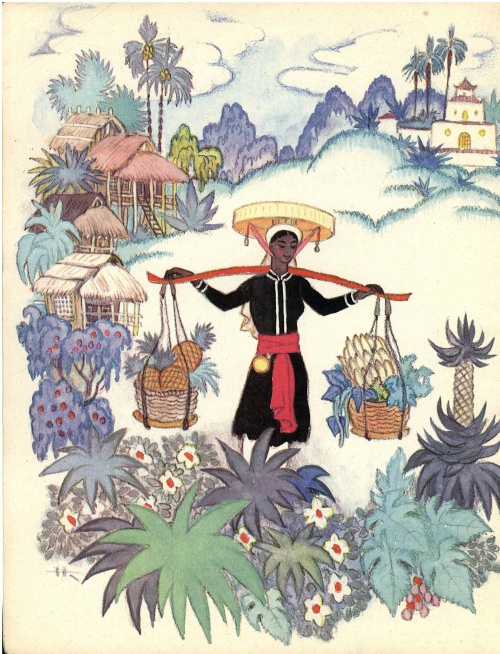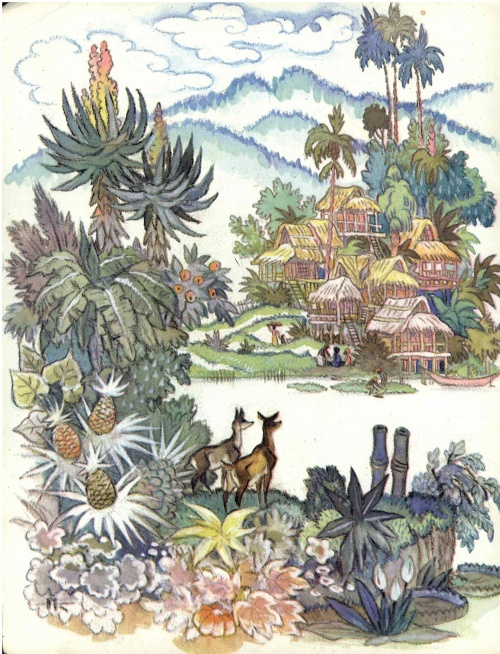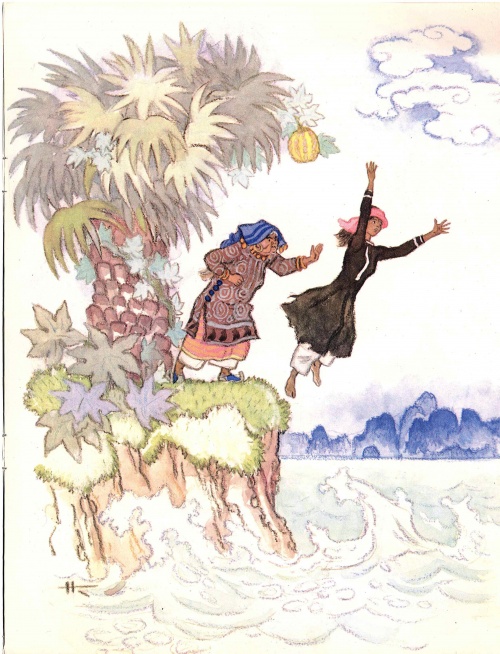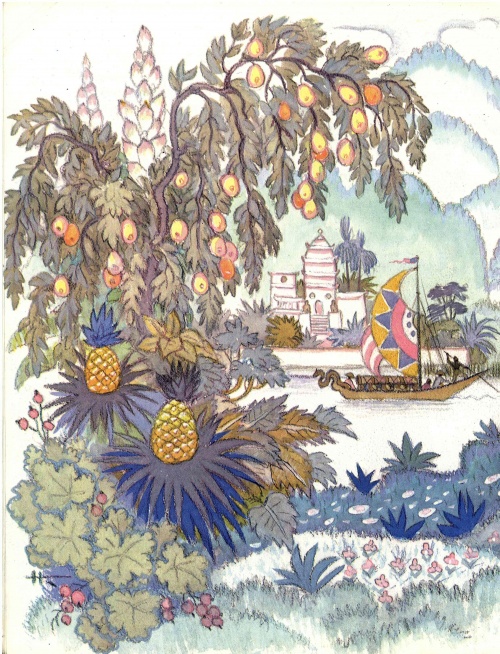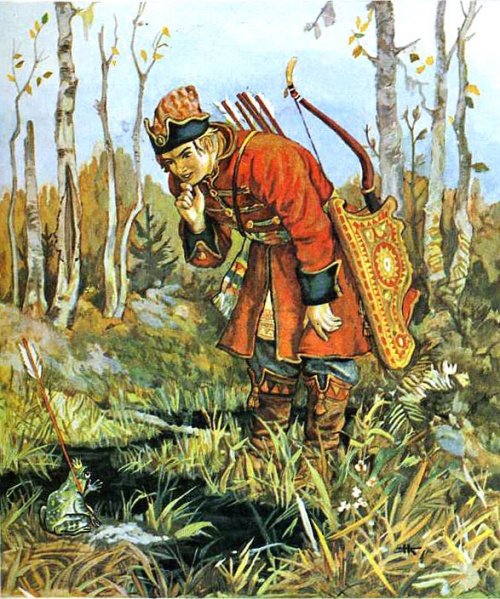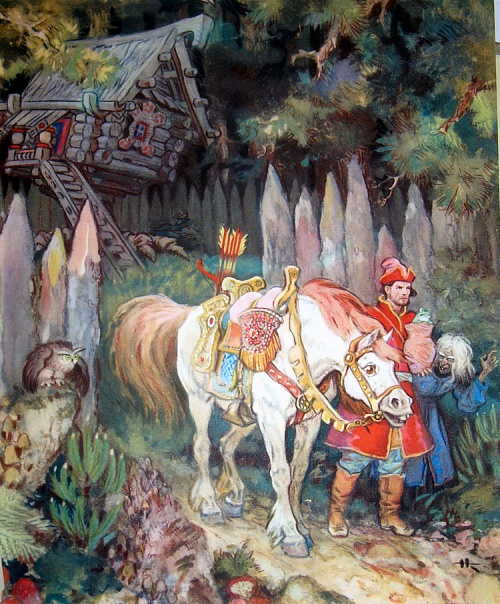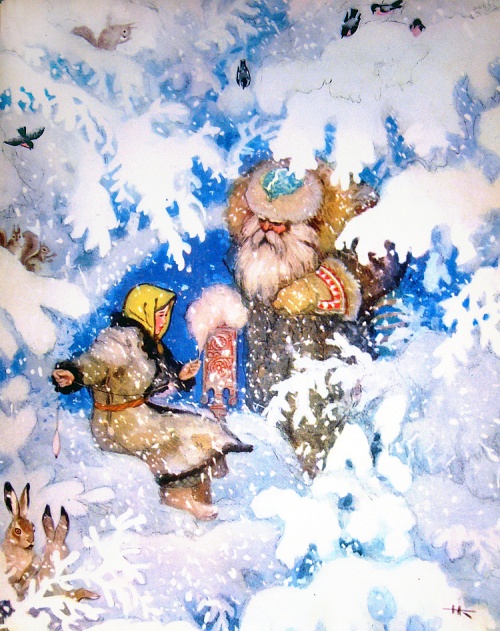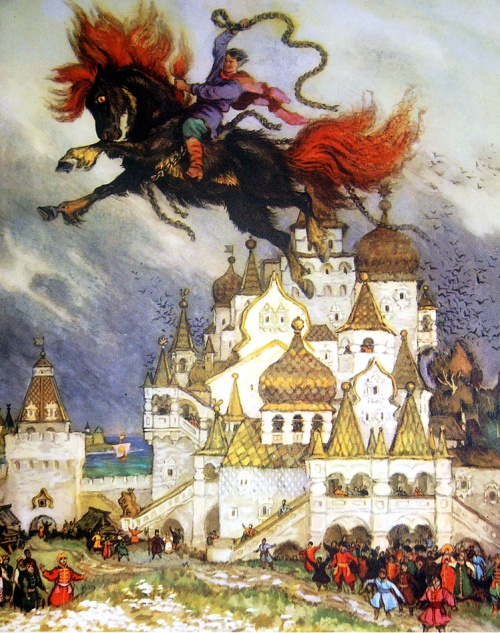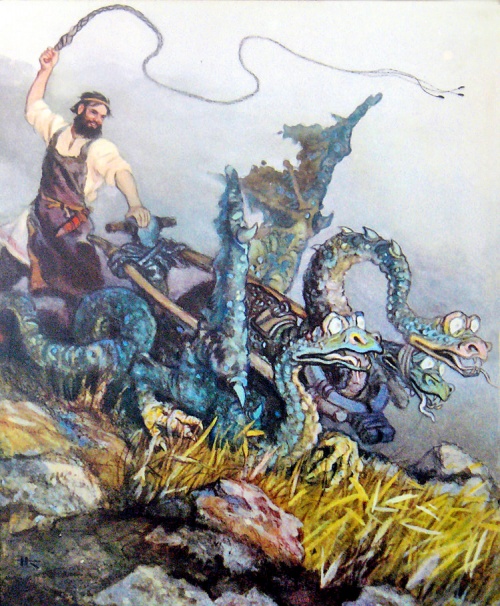Illustrator Nikolay Kochergin (361 works)
Разрешение картинок от 224x311 до 2480x3247px
Nikolai Mikhailovich Kochergin was born on May 9, 1897 in the village of Vsesvyatsky. This small village was located several miles from the Tverskaya outpost. Today, this is where the Sokol metro station is located. After several years of studying at a rural school, Nikolai Kochergin was assigned to a city school in Zamoskvorechye, where he studied without much desire and preferred to run to the Tretyakov Gallery or the Rumyantsev Museum instead of lessons. His love for art led him to 1908 to the Stroganov Art and Industrial School.
Having first received a general education, Kochergin successfully mastered special subjects. This was facilitated by experienced teachers who worked at the school.
The ability to freely understand eras and styles, the habit of looking through albums and reference books, with which the artist constantly expanded his knowledge, pushed Kochergin to collect books. Over the course of several decades, he collected a rich library of fine arts, one of the most significant in private collections in Leningrad.
Continuing his studies at the school, Nikolai Kochergin became interested in wood sculpture, and after a while he was even appointed assistant to the head of the wood carving workshop. In the summer of 1918, he volunteered for the Red Army and was soon sent to the Higher School of Military Camouflage (VShVM).
Kochergin created the Soviet poster, making his original contribution to it, with such works of propaganda art as “Queue for Wrangel”, “May 1”, “Flower Children of the Commune”. To this must be added his extensive work for newspapers and magazines of the twenties and forties years in caricature, in the design of periodicals “Red Panorama”, “Ogonyok”, “Around the World” and “World of Adventures”.
It should be noted that the artist’s not outdated and still remarkable work, performed for the Leningrad puppet theater by Evgeniy Demmeni “Gulliver in the Land of Lilliputians.” The dolls skillfully and wittily carved from wood by him have not left the stage for more than half a century, delighting with their amazing imagery.
After Hitler's Germany attacked the Soviet Union, Kochergin's main business was propaganda and posters. In besieged Leningrad, like thousands of Leningraders, the seriously ill Kochergin devoted all his strength to the creation of propaganda works. He also took part in the creation of the TASS Windows. In the spring of 1942, he was taken out of the city in serious condition along the ice of Lake Ladoga. Kochergin and his family evacuated to the city of Frunze. At the end of the forties, the artist created a number of monumental paintings - “Our Novgorod” (1946), “Leningraders” (1948), “Storm of the Winter Palace” (1950).
The post-war period was marked by Kochergin's major successes in illustrating children's books. The artist began to appear with drawings in children's magazines. The adventure stories of G. Matveev “Green Chains”, P. Kapitsa “On the High Seas” and E. Vygodskaya “Dangerous Fugitive” were among the first works illustrated by the artist for “Detgiz”. In the second half of the fifties, “The Headless Horseman” by Mine Reid was published with Kochergin’s drawings.
The epic of our country is a vast area of Kochergin’s work in children’s books. Among the numerous works illustrated by him are epics, a collection of heroic epics of the peoples of the USSR, fairy tales from Russia, Karelia, Moldova, and distant Tuva.
“The Little Humpbacked Horse” was reprinted several times in his design. Kochergin achieved his own, original reading of the famous fairy tale by II.P. Ershov. The colorfulness of Russian antiquity attracted him and determined the nature of the illustrations, equally bright and festive.
An important stage in the development of Kochergin’s creativity were the drawings for the Karelian-Finnish epic “Kalevala”. The first version of the illustrations was published in 1953. Four years later, in 1957, “Kalevala”, published by “Detgiz”, was replenished with new graphic sheets. Design of the book was improved by the artist. But he did not stop there. In the 1967 edition, the drawings became even more imaginative. One can feel the breadth of the characters' characters, inexhaustible optimism, powerful vitality and spiritual strength.
Russian and foreign folklore, the adventure genre, and works of modern literature are just the predominant aspects of the artist’s extensive work. Drawings for Egyptian and Vietnamese fairy tales, for works of Chinese classics of the 14th century, for the fantastic story by M. Zuev-Ordynets “The Legend of the City of Novo-Kitezh”, for poems by S. Mikhalkov (awarded with a diploma at the All-Union competition in 1967) - this is just part of the works Kochergin's book graphics of the sixties.
V. Zhukhrovsky’s fairy tale “The Magic Pumpkin” with illustrations from 1970 was awarded a diploma from the All-Russian Book Art Competition. The artist improved the 1973 edition of “Kalevala.” He made the screensavers colorful and more cohesive.
Kochergin is very close to the theme of heroic deeds; it is widely developed in his illustrations. Drawings for the books “Russian heroes” and “Russian horsemen” (Malysh publishing house, 1971) introduce the young reader to the exploits of Russian warriors from fabulous epic times to the present day.
period of the Great Patriotic War. The illustrations captivate with their romantic excitement and glorify the valor of the Russian people.
An important military-patriotic theme is also developed by the artist’s drawings for the books “Bogatyrs” (1972) and “Denis Davydov” (1973). In Kochergin’s works, folk legends about glorious knights received a particularly figurative embodiment. The best of his illustrations for the epics “Svyatogor” and “Dobrynya Nikitich” belong to the most impressive pages of book graphics on folklore themes.
These creative achievements once again convince us that Kochergin is one of the most experienced and significant masters of Soviet children's books, who has won wide recognition. Kochergin's achievements in illustrating children's literature and in prints on folklore themes marked the highest stage in the development of his graphics, associated with the general rise of Soviet art in the mid-sixties and seventies.
The number of works by Kochergin is very large. The artist worked in art for more than half a century. Until the end of his days, Honored Artist of the RSFSR Nikolai Mikhailovich Kochergin worked fruitfully. He died on May 10, 1974 after a short serious illness.
N.M. Kochergin always said that he sought to make his art accessible to the widest audience.
[К сожалению, к данной новости архивы недоступны для скачивания 5929]

